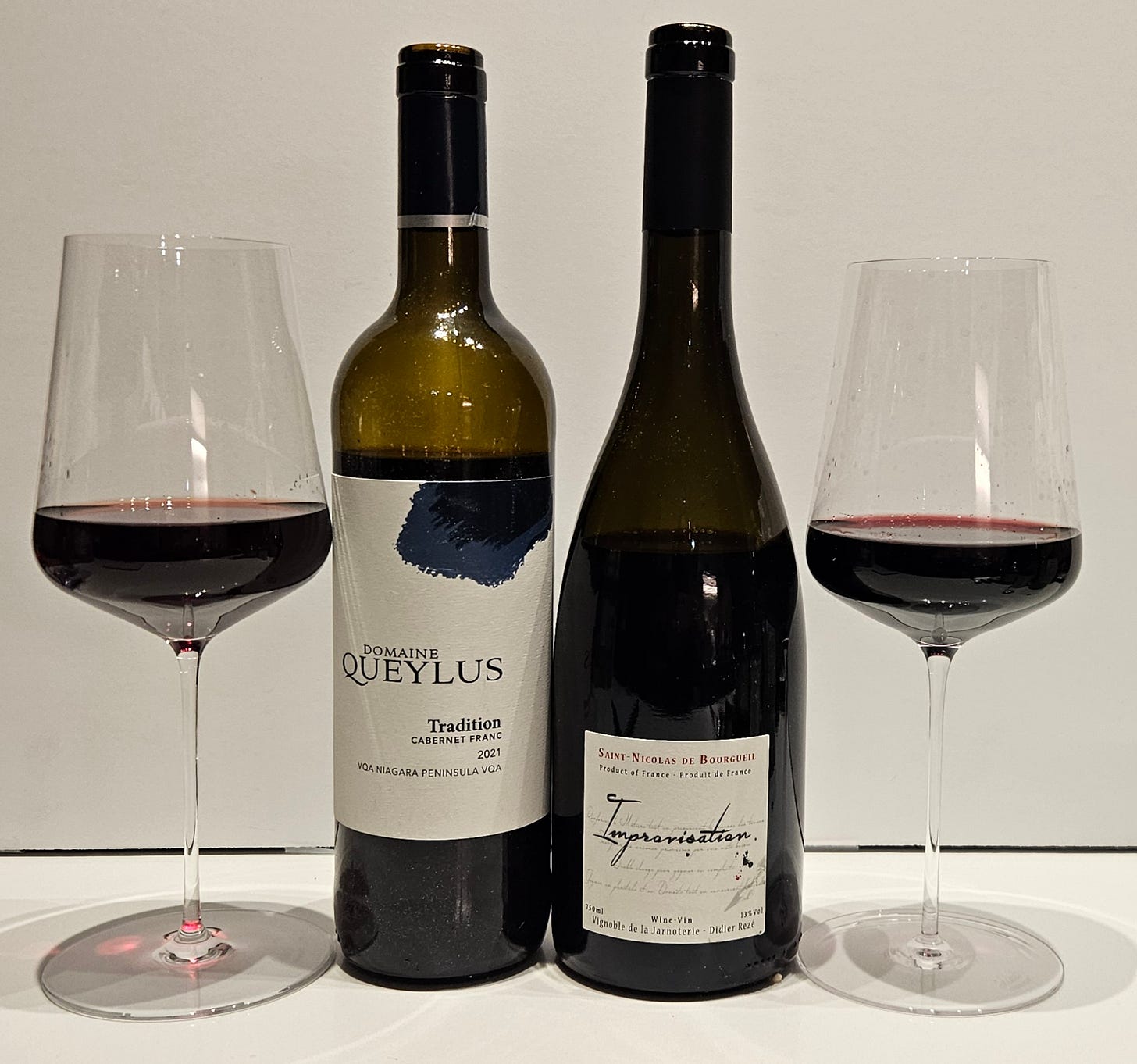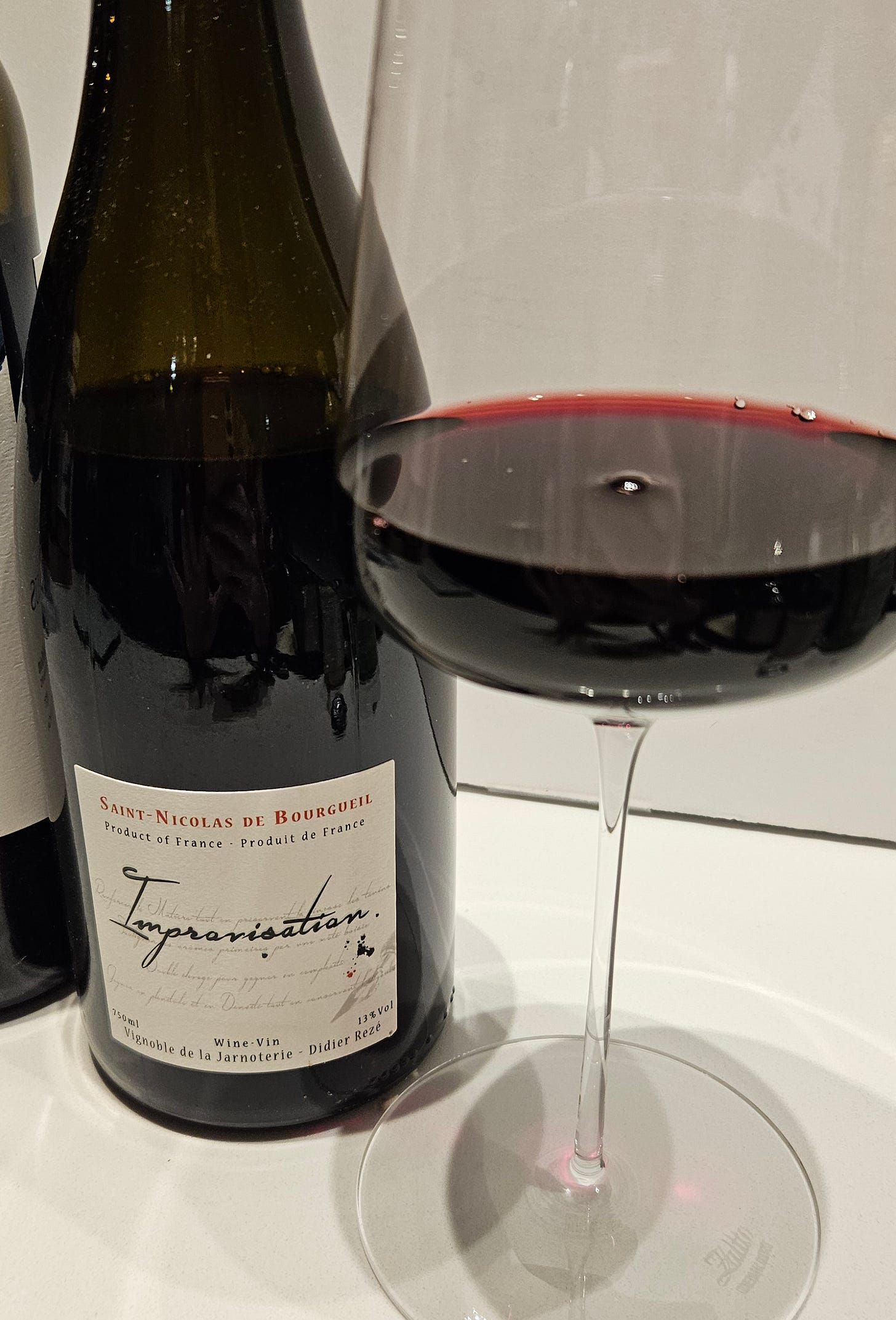At the beginning of the year when I had the thought of writing and comparing Canadian wine to wines from other regions in the world it seemed like a fun experiment. I was motivated by two things: personally exploring more Canadian wine, and perhaps encouraging others to try Canadian wine (that sometimes gets a bad rap.) Well, that second goal has now become quite the thing with the current “Buy Canadian” campaign across the country*. So, if you’re in Canada and are curious about drinking more Canadian wine, then this year-long series is for you. Every second Tuesday of the month I will have a new post on this topic. In between, you’ll get lots of cooking and baking content.
Most of the wine that is made in Canada is sold in Canada, so if you don’t live in or near Canada, you might have a hard time finding Canadian wine. Some wineries will ship internationally, but you’ll have to check with your favourite ones. Most of what’s exported is Ice Wine, as that was the product that seemed most popular in other countries. Ontario and British Columbia are the two biggest producers, but Quebec and Nova Scotia also produce wine. In fact, last month I reviewed a Riesling from Quebec. Ontario has the largest growing area (~7,000 hectares) with about 185 wineries, whereas British Columbia has more wineries (<300) yet less growing area (~4,500 hectares.)
For those of us who grew up in Canada, we might have some bad memories of the Canadian wine that was available to us, which has clouded many people’s opinions of Canadian wine, even to this day. The reality is that Canadian wine has come a long way and is often winning awards in certain categories. In my opinion, the best thing that’s happened to the wine industry in Canada is that growers and winemakers have figured out which grapes grow best in each micro-climate within their region, so colder regions in Ontario are primarily planting grapes like Chardonnay, Riesling, Cabernet Franc, and Pinot Noir that do well in cooler climates. Of note, it’s really just the winters in Canada (especially Ontario, Quebec, and Nova Scotia) that are super cold. Summers can be exceedingly warm, especially later in the summer. Out in British Columbia, the climate there allows for growing bigger and bolder varieties like Cabernet Sauvignon, Merlot, and Syrah.
Links
Cabernet Franc
OK, let’s get to this month’s grape comparison: Cabernet Franc. Cab Franc is the “parent” grape of Cabernet Sauvignon (along with Sauvignon Blanc) and of Merlot. In many regions, like Bordeaux, it’s used as a blending grape, giving structure and acidity to the wine. It can have some deep red fruit flavours, as well as some herbs and spices. Most of the Cab Franc is grown in France, and a lot of that in the Loire Valley. Here in Canada, Niagara grows most of the Cab Franc.
I’d already selected which Canadian Cab Franc I wanted to review, but when I was researching which other ones I’d compare it to, I was surprised to see that my choices were quite limited, since many countries don’t produce single-varietal wines from Cabernet Franc. As with all my comparisons, I try to pick wines that are in the same price range, from roughly the same vintage, and with the same level of alcohol and sugar content.
The Wines
Domaine Queylus, 2021 Tradition Cabernet Franc, Niagara Peninsula, 12%ABV, 2g/L RS. $29.30 (without the HST until February 15.)
Vignobles de la Jarnoterie, 2020 Improvisation, 13%ABV, 3g/L RS. $30.70 (on sale at the LCBO from the regular price of $42.95)
Tasting Process
Last month, I went into detail on the process I used to taste and comment on the wines, so if you didn’t read that and want more info, you can read about it here.
I opened both wines before dinner, but didn’t actually drink them until after dinner, because I was having salmon teriyaki, which has really strong flavours that I didn’t think would pair well with the wines. They both had about 30 minutes to breathe before I tasted them, and both had been put in the fridge for about 45 minutes beforehand since “room temperature” in my place is a bit too warm.
Side note: it’s funny that I’m comparing a wine called “Tradition” with one called “Improvisation.”
Tasting Notes
Queylus Tradition
Appearance: pale garnet colour, clear, transparent
Nose: red fruit, cherries, smoke
Taste: medium bodied, well balanced, nice mouth feel, medium tannins, dried fruit, leather
Overall: elegant and refined. If I didn’t know otherwise, I might have thought this was a Pinot Noir, but without the sour/tart cherry notes that I often don’t like in Pinot.
Jarnoterie Improvisation
Appearance: deep reddish purple, dense
Nose: dark fruits, blackberries, cocoa, herbs
Taste: medium-full bodied, med-high tannins, leather
Overall: robust and full bodied, would go well with roasted red meats. Very enjoyable, especially for people who like a “big” wine.
Summary
When I’ve done my “One Grape, Two Regions” tastings in the past, I’ve often been surprised by how similar the two wines were, given the different growing regions and winemakers. But this time, there was a noticeable difference in the two wines. The Tradition was anything but, in my opinion. I always think of Cab Franc as being, as the name suggests, “frank.” And the Improvisation certainly was (though not in a harsh way,) but the Tradition was elegant, smooth, and refined. It was really lovely, but not the big, bold wine you’d expect from a Cab Franc. That said, it’s the perfect expression of how Cab Franc grows in Ontario.
I’d love to hear which other Cabernet Francs you’ve tried from Niagara, or anywhere else in Canada. And if you’ve never had Canadian Cab Franc, let me know what you think after you try it!
*I won’t get into a discussion about how tariffs will affect the wine industry or the price of wine in general, as that’s not my area of expertise. Tariffs aside, we here in Canada have been benefiting from a pause on the GST that is placed on wine, beer, and liquor since just before Christmas, but that pause will end on February 15, so get out there an stock up before the prices go up again. Here in Ontario, the provincial government matched the Federal government’s tax break, so instead of paying 13% HST on alcohol, the whole thing is being waived (however, not every province is doing this, as I learned when I was in Montreal recently, as the Quebec government didn’t waive their QST.)






